
TEACHING A FOREIGN LANGUAGE WITH THE HELP OF PICTURES
Introduction------------------------------------------------------------------------------3
Main body--------------------------------------------------------------------------------5
1. Pictures in the language classroom
2. Communication and challenges of pictures
Conclusion-------------------------------------------------------------------------------21
Bibliography-----------------------------------------------------------------------------22
Introduction
The subject-matter of the present term-paper is “teaching a foreign language with the help of pictures”. The aim of the term-paper is to provide a basis and encouragement for teaching a foreign language with the help of pictures. This term-paper is divided into a theoretical and practical part.
The theoretical part will begin with a brief introduction about pictures, and the practical part will deal with activities which compiled with pictures and which are usually popular among students.
There are many ways to teach a class, but pictures can help to teach virtually any subject and make the class enjoyable for both students and teachers.
Things play an enormous part in affecting us and in giving us information. We predict, deduce and infer, not only from what we hear and read but from what we see around us and from what we remember having seen. Pictures are not just an aspect of method but through their representation of places, objects and people they are an essential part of the overall experience teachers must help their students to cope with. Specifically, pictures contribute to:
· Interest and motivation;
· A sense of the context of the language;
· A specific reference point or stimulus.
A picture is something we bring to support whatever project or report we are discussing. It gives the listener something concrete to look at to enable a better understanding of what we are saying. It can be an actual object or a graph or pie chart whatever we feel would support our work.
It is very common to hear people say that pictures are all right for beginners and for young people but not for advances students or exam classes. This generalization is unhelpful and untrue. Any activity done in the classroom must be efficient in achieving its purpose. Pictures should certainly be subjected to some practical criteria for assessment of their value, but such criteria should apply to all activities whether they involve pictures or not. Pictures can be used by teachers and students whatever the emphasis of the syllabus they are following. Pictures are used to increase the effectiveness of classroom teaching-learning process the attitude, motivation, and interest of the learner are factors of crucial importance in determining his achievement.
Sometimes a picture is worth a thousand words, and this is particularly true when teaching English as a foreign language. Pictures can be used to teach everything from vocabulary to prepositions. In addition to instructional advantages, visuals keep lessons interesting for the learners. If possible, get access to an overhead or slide projector for effective presentations.
A teacher may use individual pictures in the introduction and testing of grammatical or vocabulary items. Pictures have great importance in the sense that what cannot be described by words. Pictures give many advantages such as: they are a popular and interesting way for foreign language teaching. They give necessary variation and provide the classroom change-of-pace so essential to maintaining a high level of interest. They go beyond the limited school and home environment of the students and allow discussion of a wide variety of situations and circumstances. They illustrate that, in the basics of life, most people in the world share similar experiences.
1. Pictures in the language classroom
As Hill (1990) pointed out, “the standard classroom” is usually not a very suitable environment for learning languages. That is why teachers search for various aids and stimuli to improve this situation. Pictures are one of these valuable aids. They bring “images of reality into the unnatural world of the language classroom.” Pictures bring not only images of reality, but can also function as a fun element in the class. Sometimes it is surprising, how pictures may change a lesson, even if only employed in additional exercises or just to create the atmosphere.
There are many reasons for using pictures in language teaching. As Wright pointed out, they are motivating and draw learners’ attention. This fact will be repeatedly demonstrated in the Practical Part of this word. Furthermore, Wright refers to the fact that they provide a sense of the context of the language and give a specific reference point or stimulus.
According to Rigg, the process of teaching has three main components: teachers, students and instructional material. Pictures are a common thing in our daily life, they can be found everywhere. They are able to give a lot of information as reading text, so they are a great help in teaching. Pictures can be used as visual aids. They are able to give information about the instructions in speaking procedure text, though by looking it is easy for students to tell the materials and the steps. Besides they can also develop students ideas. The pictures are drawn on a paper which tells a sequence of events, so they will lead speakers to develop their idea and speak the procedure orderly (Rigg, 1969).
To enrich our vocabulary knowledge, pictures play a great role and prevent our isolation from the world of scientific and technical knowledge that can be gained by using English as a means of communication in real-life situations. Apart from this, Calder, cited in Girma, states that psychologists have found that 84% of what we learn we get from seeing; 13% of what we learn we get from hearing; and only 3% we learn in other ways. This implies that most of what we learn we get through visual media. More meaningful and problem-solving tasks of language teaching require learners to analyze and process language more deeply, through the use of visual materials which help them to commit information to long-term memory.
Pictures meet with a wide range of use not only in acquiring vocabulary, but also in many other aspects of foreign language teaching. Wright demonstrated this fact on an example, where he used one compiled picture and illustrated the possibility of use in five very different language areas. His example shows employing pictures in teaching structure, vocabulary, functions, situations and all four skills. Furthermore, he pointed out that “potential of pictures is so great that only a taste of their full potential can be given” (Wright, 1990). To be more specific, besides lessons where pictures are in the main focus, they might be used just as a “stimulus for writing and discussion, as an illustration of something being read or talked about, as background to a topic and so on”. Pictures can motivate the student and make him or her want to pay attention and want to take part.
Pictures assist teachers by giving them time for necessary classroom activities like drills, exercises, instructions and explanation for which their personal influence is indispensable (Westrup, 2005). Wright and Haleem also state: “One of the most important aspects of language teaching is the role of visual material: the importance of using pictures to make one’s teaching more effective, communicative and interesting is well-known. However, many teachers, even experienced teachers do not exploit the potential of visual materials to the full. In addition, deciding which techniques to use, for which language teaching purpose is often problematical”
(Wright, 1991).
Singh also supports this idea by saying, "Often teachers know the value of certain pictures, but they fail to utilize them to the fullest because they do not take time to plan their use.” Doff asserts, “The use of real objects, pictures and mime for suitable vocabulary is a very effective method as it is direct, interesting, and it makes an impression on the class.”(Doff, 1988) This implies that using pictures holds the attention of the learners on meaning, and help them to make the language used in the class more real and alive. Pictures evoke an immediate response from learners in a class which is the vital seed of all meaningful language-learning in general and vocabulary in particular. In general, the use of various types of pictures help the learners in order to negotiate meaning, actively interact with one another and exchange views while their attention is on meaning which in turn develops their vocabulary knowledge.
Pictures, being suitable for any group of learners independently on age or level, can be used in lots of various ways. As Hill stated, “What is done is limited only by the preparation time available, the visuals to hand and the imagination of the individual teacher.”( Hill, 1990)
Hill listed several advantages of pictures, such as availability (one can get them in any magazines, on the internet, etc.); they are cheap, often free; they are personal (teacher selects them); flexibility - easily kept, useful for various types of activities (drilling, comparing, etc.), they are “always fresh and different”, which means they come in a variety of formats and styles and moreover the learner often wonders what comes next. Learners always pay attention and are curious about what are they going to do with the pictures shown. However, there is always a downside: it can be quite time consuming to find the right pictures for a specific type of activity for a beginning teacher who lacks his or her own collection. Still on the whole, this drawback is greatly outweighed by the above-mentioned pros. Furthermore, when the collection of pictures is once made, it can serve for a long time. Another matter is the question of how to use pictures effectively. It counts as general methodological knowledge that in learning languages, students should perceive the input through as many channels as possible. Therefore it is important to include variety of stimuli in teaching.
Real objects are better than pictures whenever we have them in the classroom. When there are real windows, doors, walls, floors, desks, etc. in the classroom, it is foolish not to use them in teaching. If a teacher wishes to introduce the word ‘ring’ which is worn on a finger, it is by far easier to show the material to the students instead of devoting time on other techniques.”
Coppen explains: “Children have to learn to read pictures and charts just as they have to learn to read printed words. The pictures must be simple and unambiguous, should not include irrelevant matter, and should be so designed that the visual emphasis falls on the teaching point. Colours should contrast well and all the main items should be large enough to be clearly visible to all children. In presenting the material, the children’s attention must be directed in such a way that they observe, what is important and are able to draw conclusion from what they see”
(Coppen, 1969).
It can be understood from the above that colored pictures are more effective than black and white ones and can be used for many purposes. The picture should tell the learner something familiar to connect it with real life. The colored pictures especially help kids learn and speak English alphabet easily.
. 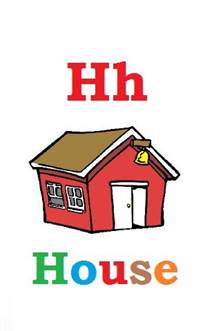
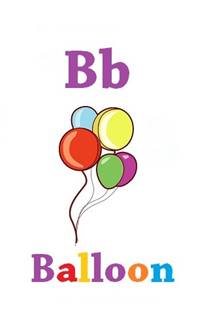
Pictures can be used to illustrate certain sounds. Sound pictures are excellent teaching tools to help students learn sounds and other phonics skills. These kinds of pictures will help teachers reinforce skills in sounds at school. These pictures can help children and adult learners with sounds.
One of the most useful developments in language teaching methodology in recent years has been in the organization of students in the classroom. Pictures can play a key role in motivating students, contextualizing the language they are using, giving them a reference and in helping to discipline the activity. There are two basic ingredients to successful organization: the students should be clear about what they are supposed to do, and they should have the language to do it.
One useful technique for many of the forms of organization is “ Twenty Questions”. In the game “ Twenty Questions” one person holds a picture so that the class cannot see it. The class asks questions to find out what is in the picture. In one of the memory games one person stands with his or her back to a big picture and describes the picture from memory. The class checks what he or she says.
Pictures can be used in teaching prepositions. Teaching prepositions of location to beginning level learners lends itself to fun, interactive activities. One activity that my students have always enjoyed is creating and explaining their own drawings (Wright, 1990).. Here’s how it works. Students are then asked to look carefully at the picture. They should look at the picture and say where the items are.
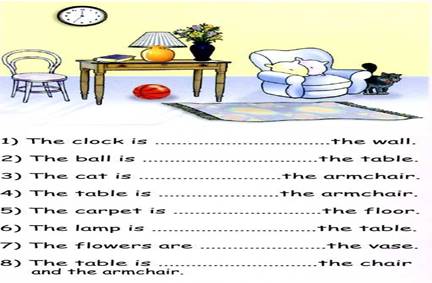
In the language learning of young children pictures are often used to provide associations for the learning of new words. It goes without saying that we cannot use pictures for every unknown word as some words are abstract and cannot be illustrated easily. Indeed many teachers of young children in the English language classrooms use photo dictionaries to increase the vocabulary and speaking skills of learners.
The word map is an excellent method for scaffolding a child’s vocabulary learning. Like the other explicit instructional methods, the adult (either alone or with the children) should preview reading materials to determine which words are unfamiliar. For each of these new vocabulary words the child (with the support of the adult) creates a graphic organizer for the word. At the top or center of the organizer is the vocabulary word. Branching off of the word are three categories: classification (what class or group the word belongs to), qualities (what the word is like) and examples. Using prior knowledge the child fills in each of these three categories. Word maps help readers develop complete understanding of words. This strategy is best used with children in grades 3-12.
Big picture flashcards are very helpful tools in presenting and drilling forms of new words, since they draw learners’ attention and make these often boring activities more enjoyable. And that is exactly what teachers need when presenting new language – to catch their learners’ full attention, to raise their interest in the presented subject and hence also their motivation. At the same time flashcards (as well as other forms of pictures and visual aids in general) enable students to link the meaning of the words with real-world images immediately. When using flashcards in presentation, it is easy to involve learners actively and to combine the presentation with controlled practice (Wright, 1990). The presentation of vocabulary with flashcards can be done in lots of various ways, for example in telling a story or just simply based on a set of vocabulary for a particular topic.
In this sense, the picture is used in a more meaningful and ‘real-life communicative’ way than being just displayed for students to say what they can actually see. This will probably have a greater impact on the retention of a piece of vocabulary again and also subsequently on the ability to use it in communication.
Word flashcards are perhaps worth mentioning at this point, even though they are not actually pictures. However, being used in a similar way as picture flashcards, they can often enrich the lesson. On top of that, those two can be indeed combined and applied together, e.g. in a matching or labelling activity. As Wright pointed out, word flashcards are most typically used in teaching reading and writing. Nevertheless, they will find their use in teaching vocabulary too, offering valuable help mainly in teaching the spelling of newly learnt words, which definitely should not be neglected as it often is (Wright, 1976).
Small picture flashcards A plenty of variations of these cards are typically applied in communicative activities in pairs or small groups of students, thus finding a meaningful role in reviewing and practicing vocabulary. In a closer look, we will find one-side-only cards, both-sided ones and sets of pairs (antonyms or synonyms, a picture and the corresponding word or phrase) or sets of cards connected e.g. by their meaning. Being flexible in their way of use, these cards offer teachers and their students a large amount of possibilities in applying them in a number of activities and games such as ‘domino’ or various forms of word matching activities. Moreover, they are fit for a range of sorting or ordering activities, e.g. creating a story. These cards can also be used for games based on asking each other questions and exchanging them while searching for a set.
Drawing finds huge potential in teaching languages. Simple drawings can possibly substitute other forms of pictures. Although some teachers may not be exactly proficient in drawing, they are eventually bound to find a way of drawing simple pictures for classroom use. Wright stated that drawings “provide an immediately available source of pictorial material for the activities. Students and teachers drawings also have a special quality, which lies in their immediacy and their individuality.” The element of individuality might have a significant impact on remembering, whether it is a unique expression of the teacher or even better, the expression of students when creating the pictures themselves. The activity of drawing within the classroom could be perhaps divided into two categories: Drawing on the board carried out by the teacher for example to illustrate the meaning of new language in presentation and drawing as an activity of students in various, usually listening or reading, exercises.
Wall-pictures are another valuable visual material for language classes. In the first place, they can be displayed in the classroom to set English (or foreign in general) environment and then they function as another source of language to be absorbed by students in the process of natural acquisition. Furthermore, they will find their use both in presentation of new language and controlled practice.
As Wright and Haleem pointed out, many words and various structures might be demonstrated by these complex pictures and subsequently many opportunities for controlled practice are given. They listed several types of activities and games to spice up controlled practice, such as variations of the memory game, such as “Hide and seek” or “True/false game” and so on (Wright, 1991). The competition element or the challenge to remember in controlled practice is very beneficial. It makes students think and gives them a reason to speak, which has a great impact on remembering the target language as well as making the activities more enjoyable.
Activities with compiled pictures are usually popular among students, giving them an opportunity to apply their knowledge of vocabulary and structure in combination with their ability to speak in order to reach the goal.
The pictures should be filed so that they can be found and used easily. Here it is also important to pay attention the size of picture. When deciding whether to file a picture for classwork or groupwork the size of the paper is less important than the size of the image. A picture of an apple filling a piece of paper half the size of this page is big enough to be seen from the back of a classroom. A picture which is one meter square may contain details which are impossible to see unless studied at close range. And for most purposes this will mean that such a picture can only be used by groups or individuals. It is usually a good idea to file a picture as one to be used with the whole class or one to be used in groupwork or by individuals, and this does mean that the smallest picture can be useful.
The most practical way of checking the size of a picture intended for class use is to try it out. Basically, a detail which must be recognized from the back of a classroom ought to be at least 3 centimetres in height.
So there are various types of pictures to be used for language learning, practicing and organizing. They differ regarding their size, form and origin, which make them fit for a number of activities depending on their type. For several reasons, they help students remember the words better and they help the teacher to make the lesson more interesting and beneficial.
2. Communication and challenges of pictures
In most of the activities the student is challenged to describe something so well that another student can identify it by pointing, drawing, commenting, etc. There are several possibilities of categorization of activities.
Say anything you know: The class is shown a picture of a scene. The students say anything they can about it. This is an opportunity for the least able to call out any word they know which could name part of the picture or be related to it in some way; the more able can offer fuller sentences which might be objective descriptions, interpretations, or personal associations. It is a communicative use of language in the sense that the teacher cannot be sure what they will say, but it is not random in the sense that the words must relate to the picture. It is satisfying for the students to see their suggestions written on the board.
Variation- The class is shown a complicated picture. Each student writes down as many words as he or she can which describe things in the picture. Students then join their neighbours and compile a joint list.
Picture dictation - In pairs, one student describes a picture to the other student, who must draw it. The drawer can ask questions about the picture, but is not allowed to see it while drawing.
After reviewing the key vocabulary, pupils draw an angel the teacher describes. While doing so, the teacher might draw it himself/herself on the hidden part of the board for following feedback or might as well invite a student to do that. Now pupils know how to describe an angel and have some tips how it can look like. They work in pairs. They make up and draw their own angel and label all parts of its body or write a simple description. They must not show their pictures to anybody. They can also name the angel and list its ‘personal details’ or add some extra information, such as its favorite colour, the food it eats etc. Then they work in pairs, one of them describes his or her angel, while the partner draws it according to the description; then they swap the roles. Afterwards they can talk or ask each other about the extra information on their angels and write the answers down (Brown, 2006).
This activity demonstrates the usefulness of drawing as a tool in practicing aspects of the language, such as listening, speaking or structure. Being organized as pair-work, the activity provides an opportunity for many students to speak simultaneously, which results in a more effective usage of time in the lesson and thus helps to improve the often difficult situation of limited possibilities for an individual to speak in the class.
Pupils are allowed to unleash their fantasy and creativity and are motivated to make up the most original picture and subsequently are happy to share what they have drawn. This, while giving them an opportunity to use the language in a purposeful way, also functions as an element which has a great influence on remembering the target language. This is further reinforced by the longer time the children spend with drawing, as a longer period brings more opportunities to use and remember the desired words.
The activity of drawing also offers pupils a chance to speak: they can make comments on each other’s picture, ask questions about details (e.g. why has it got four hands, can your angel speak etc.). The teacher should encourage them to do so. This activity usually works very well in the class, since especially younger students love drawing as well as enjoy practicing the language in the safe environment of pair-work. A possible imperfection might lie in the lack of the teachers’ ability to supervise and help with the language used by all speaking pupils at once. The teacher’s role would be to circulate and not only offer help and advice when needed but also to mark down his or her observations on pupils’ language and mistakes made for latter feedback. Furthermore, the teacher should guide pupils not to spend too much time on drawing their angels and help them rather direct their effort on subsequent speaking.
Using Images to Generate Writing-Using images to prompt writing is a key strategy we use with our English-Language Learners. Pictures are immediately engaging and often less daunting for students than texts. We often use images to push language development and thinking skills within a thematic unit. For example, we ask students to look at an image posted on the wall, on a document camera, or overhead. First, students describe in writing what they observe, trying to record as many details as possible. It helps if students have a copy of the image on which they can write. Then the teacher asks students to write as many questions they can think of about the image and the details they have listed. Once students have shared their questions with a classmate, the teacher asks them to use the inductive process (described above in the Picture Word Inductive Model) to organize these questions into categories (for example, questions about feelings/emotions or historical questions) and then to add more questions to each category. These questions could serve as writing entry points for students to develop longer writing pieces based on the image.
Research has shown that these types of inquiry activities—where students are asked to analyze a piece of concrete data such as a picture or an object in order to generate ideas for writing—are an effective instructional practice for improving the writing of adolescent learners.
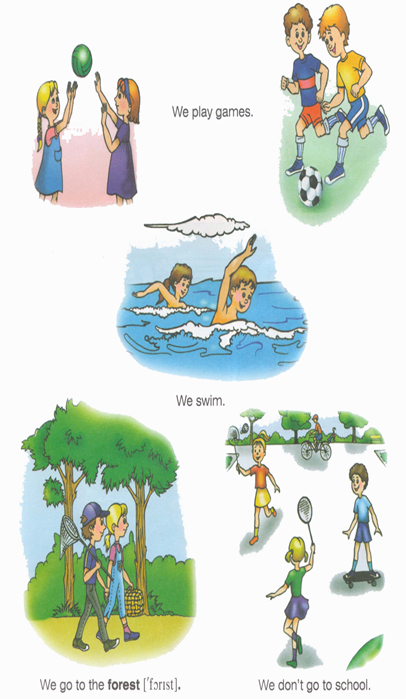 Sharing
information: It is based on the principle of the
information gap. Students communicate with each other in order to gain the
information they need. For instance, students get a picture of the actions they
do in summer and mutually ask in pairs what each of them does in summer.
Sharing
information: It is based on the principle of the
information gap. Students communicate with each other in order to gain the
information they need. For instance, students get a picture of the actions they
do in summer and mutually ask in pairs what each of them does in summer.
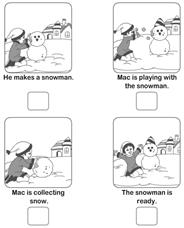 Describe
a picture- Each student is given a picture by
the teacher. He or she writes a description of the picture. The teacher
collects all the pictures and displays them. The descriptions are collected and
then redistributed to the students so that each student gets another student’s
description.
Describe
a picture- Each student is given a picture by
the teacher. He or she writes a description of the picture. The teacher
collects all the pictures and displays them. The descriptions are collected and
then redistributed to the students so that each student gets another student’s
description.
Developing short-turn talk: These activities are based on practicing dialogues. For instance, each student gets a picture of a job which he or she should play and create a dialogue. The students should make a dialogue using the pictures (Wright, 1991). Thus, for example;
A: What is his/her job?
B: He/she is a doctor/driver, teacher.../
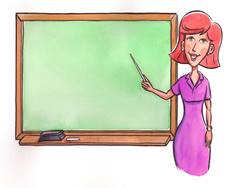

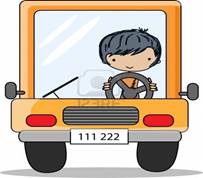

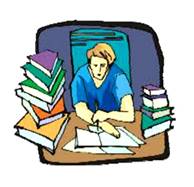

Picture story sequence: A picture sequence is a series of photographs dealing with one subject. It may tell a story, present an event, describe a scene, reveal a person, or show how to do something. A common use for a picture sequence is depicting a person during an interview. The most successful picture sequences create several visual images that contain emphasis and action. It is the account of an interesting and significant event, personality, idea, or other aspect of contemporary life.
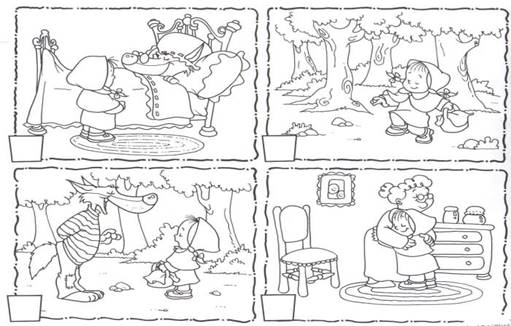
Students can work individually or in small groups to put the picture cards in sequential order. After they understand how the cards work, they may wish to make their own cards to tell a story, and then trade the cards with a friend to see if they can figure out what the sequence of the story is supposed to be. The sequence activities can be used across different grade levels and with different numbers of students.
Juxtaposing pictures: Many topics can be discussed by the simple idea of displaying a number of pictures (and texts) which represent different aspects of the topic. By juxtaposing the pictures their different qualities are high-lighted. Students respond differently to the implied relationships between the information in the pictures and there are consequently ‘opinion gaps’ and reasons for speaking.
During this activity the students are shown a number of pictures which represent various aspects of different jobs. Aspects might include: physical or mental stain, whether they are outside or inside, alone or with others, well paid or badly paid. The students are asked to consider the advantages and disadvantages of the various jobs and say which they would prefer and why.
Touch the picture: The teacher fixes about ten to twenty pictures all over the board. He or she divides the class into two teams and invites them to stand one behind another in two rows, about 2 meters from the board. The teacher says a word expressing the meaning of one of the pictures. The first student from each team runs to the board and touches the appropriate picture. The first one to touch the correct picture gains a point for his or her team. They both fall in the back of their queues. The team which first reaches the beforehand defined amount of points wins. Students can be asked to utilize several selected words in a sentence or give their definition. They can also be asked to sort out the pictures or label them. This activity is included to illustrate how flashcards can be used in combination with TPR in vocabulary revision. This combination of active motion and a visual component makes it easier for some students to memorize the words. Pictures could be substituted for real world objects, which on the other hand tends to be rather demanding for the teacher.
Furthermore, the competition is an important element in this activity, since it functions as a strong motivation to achieve good results (children in general do not like disappointing their team, want to be successful, like running etc.).
This activity can be used with learners of any level or age. It is rather a lively one; therefore as a warm-up it is suitable mainly for somewhat calm or passive groups. With too spirited groups it would be better to perform the activity by the end of the lesson, since it can be tough to calm the students down afterwards. However, it always tents to be a bit noisy; hence it is advisable to set firm rules beforehand. It might be worthwhile to point out that students should be careful about the pictures. Those are recommended to be hard-paper or laminated flash cards.
The presence of visuals plays a significant role in this activity. Its importance lies in the fact that all students tend to watch them for the whole time, even if it is not their turn – they are usually interested if a member of their team touches the correct picture etc. Therefore when the corresponding word is called out by the teacher, the link between the word and its picture is being formed for a longer time. This is being reinforced by concentration and excitement from the game.
To sum up, pictures are used as usual supplementary materials in foreign language classes. They are used for different kinds of activities, mainly to practice the language skills, vocabulary, grammar and pronunciation. However, describing pictures is not the only way how to exploit them. Pictures introduce a topic; they serve as a discussion starter, as a kind of pre-reading, pre-listening or pre-writing activity or as a kind of game. Simply, the spectrum of the usage is wide.
Conclusion
Pictures have been used for centuries to help students understand various aspects of foreign languages. They do have an impact on students’ motivation and interest. They are excellent tools for the demonstration of the meaning, especially regarding particular things.
There are five criteria which are aimed at using of pictures.
· Easy to prepare
· Easy to organise
· Interesting
· Meaningful and authentic
· Sufficient amount of language
Shortly, teachers can use different pictures to present different words to avoid monotony and motivate the students. Choosing what pictures to combine depends on the features of the word being taught and the general proficiency level of students. The effectiveness of the lesson might be enhanced if the teacher knows how, when and where to combine what visual aids to teach. One more important point is, when selecting a proper technique, the teachers should be aware of some factors that are very likely to have impacts on the effectiveness of a lesson such as learners’ age, interest or expectations.
Pictures can be used with a whole class, small groups, pairs, or individually to lead students into inquiring about words and adding them to their vocabularies, discovering phonetic and structural principles, and engaging in other reading and writing activities. While some skills can be taught explicitly, pictures are designed to capitalize on a student's ability to think inductively. Essentially, students study various pictures and then "shake out" the words they see, while the teacher draws a line to the corresponding word or phrase, spelling it and having the students repeat the pronunciation and spelling. With practice, experience, and modeling, students develop a greater understanding of the conventions of English as they classify the words according to common letter patterns and begin to internalize phonetic and structural principles. Pictures are universal stimuli to aid learning that provide a starting point for language sharing in the classroom.
Bibliography
Learning Vocabulary. Cambridge: CUP.
Press, 2005.
Press, 1990.
Internet sources
1. http://www.eslflow.com/Picturelessonsandteachingideas.html
2. http://www.edutopia.org/blog/ell-engagment-using-photos
3.http://blog.britishcouncil.org/2013/12/06/how-english-teachers-can-use-pictures-in-the- classroom/
4. http://iteslj.org/Articles/Ansary-Textbooks/
5.http://efkipunirow2008.wordpress.com/2011/07/29/the-analysis-of-english-textbook-based-on-competence-based-curriculum-cbc-for-the-first-year-of-senior-high-school-published-by-pen
Скачано с www.znanio.ru
Материалы на данной страницы взяты из открытых источников либо размещены пользователем в соответствии с договором-офертой сайта. Вы можете сообщить о нарушении.